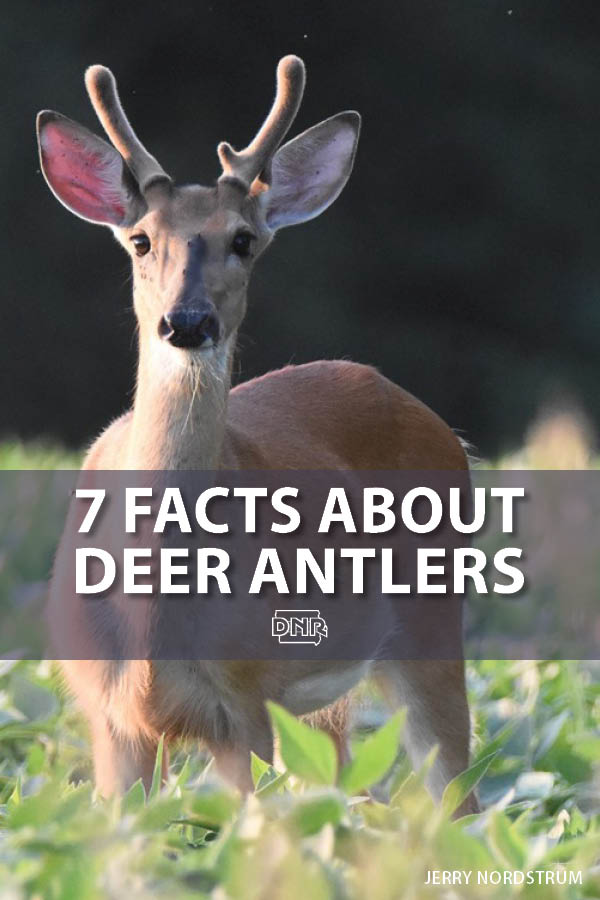Let's get right to the point (wait, tine?) and get to the basics of white-tailed deer and their antlers:
 1. Antlers are not horns
1. Antlers are not horns
Antlers grow and fall off (or shed) each year. In comparison, animals with horns keep the same horns throughout their life.
2. Velvet, if you please
The stage where a deer's antlers grow is known as the velvet stage. Deer antlers have been known to grow as much as a quarter-inch in a day, making the velvet the fastest growing animal tissue known in the world.
3. Hard-headed
Calcium deposited under the velvet creates antlers made of bone. Horns, however, are more keratin-based, like our fingernails.
4. Heads up
These antlers aren't just for show - male deer use them to show dominance. However, on rare occasions - like one in 10,000 does - female deer can grow antlers, too.
5. Moving up
While horns grow from the base, antlers actually grow from the ends, or tips.
6. Timing is everything
Antlers begin to grow depending on how much daylight there is during the day (that's also called a photoperiod).
7. Mmmm...antlers
After a deer's antlers fall off, or shed, in mid-winter, they become tasty snacks for critters like mice and squirrels, who chew on them for the minerals. They can also make for a fun pastime for people walking the woods - get tips on shed antler hunting.
For more, check out these Cool Things You Should Know About Deer and our Iowa Wildlife board on Pinterest.